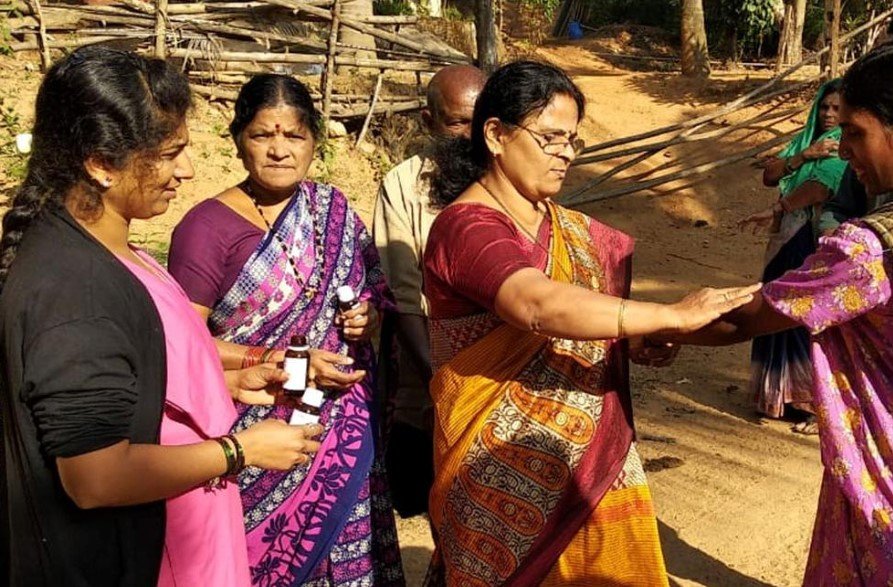A 69-year-old woman in Karnataka has tragically passed away after contracting Kyasanur Forest Disease (KFD), marking the first death from the infection this year. The woman, from Chikkamagaluru, had been suffering from high fever before her death on March 15.
Kyasanur Forest Disease, often referred to as “monkey fever,” is a viral infection that spreads through ticks. Though monkeys are typically the primary victims, humans, particularly those living in or visiting forested areas, are at risk. The infection is primarily spread through contact with infected ticks, which are found in forests and other wooded regions.
This woman’s death brings heightened concern about the spread of KFD in the region, especially as many people in rural areas, such as the one she lived in, frequently venture into forests for work or personal activities, making them vulnerable to the disease.
What is Kyasanur Forest Disease?
Kyasanur Forest Disease is a viral infection that can cause a range of symptoms, from mild fever to severe illness, including bleeding and organ failure. First identified in the Kyasanur Forest region of Karnataka in 1957, it has since become a known threat in parts of the state, particularly during the months when the tick population is high.
Though humans can contract KFD through tick bites, the disease is also known to affect monkeys. These animals play a role in the transmission cycle, as they can host the ticks that infect both other primates and humans. For this reason, the disease is often associated with forests where monkeys reside, and it poses a significant risk to those who spend time in these areas.

Infected individuals typically show signs of illness within a week of exposure. The symptoms start with fever, headache, muscle pain, and fatigue, and they can progress to more severe complications, including hemorrhagic symptoms, affecting the liver and other organs.
A Growing Concern in Rural Karnataka
KFD is most commonly reported in regions like Chikkamagaluru and other districts of Karnataka, where many people live in close proximity to forests. Locals, such as farmers, cattle herders, and firewood collectors, are most at risk, as they frequently enter forests where the ticks that carry the disease are present.
Despite the availability of treatment for KFD, including antiviral medications and supportive care, the disease remains difficult to manage in rural areas due to lack of healthcare infrastructure, awareness, and preventative measures.
Authorities have been actively working to reduce the spread of the disease by encouraging people in high-risk areas to take necessary precautions, such as wearing protective clothing, using tick repellents, and seeking medical attention immediately if symptoms arise.
Preventing the Spread of KFD: What Can Be Done?
There is an urgent need to raise awareness about the disease and its transmission among people living in rural areas. Many locals remain unaware of the risks of tick bites and the symptoms associated with KFD. Additionally, there are significant gaps in healthcare access and medical treatment in certain parts of Karnataka.
One of the biggest challenges in tackling the spread of KFD is ensuring that communities are equipped with proper health services, especially in remote areas. Many deaths could potentially be avoided if early detection and treatment were more accessible.
Some of the measures that can help reduce the risk of infection include:
- Wearing protective clothing while in forested areas to minimize contact with ticks.
- Using insect repellents to reduce the likelihood of tick bites.
- Seeking medical attention immediately if symptoms of fever or flu-like illness develop, especially after visiting forest areas.
- Promoting community awareness through local health campaigns that inform people about the symptoms, risks, and prevention methods associated with KFD.
What Happens After a KFD Death?
The death of a KFD patient usually prompts public health officials to take immediate action to prevent further cases. In this case, after the woman from Chikkamagaluru passed away, her family and healthcare professionals followed the necessary protocols to contain the virus.
Healthcare workers at the government hospital in Koppa, where the woman was admitted, initiated contact tracing and advised anyone who may have been in close proximity to her to monitor for symptoms and seek medical care if needed. Health officials are also investigating any other possible sources of exposure, including other potential cases in the area.
Statistical Insights: KFD in 2025
With the current case marking the first death of the year, it’s essential to look at the trajectory of KFD in the past few years. According to Karnataka’s health department records, there has been a slow but steady rise in the number of reported cases. In 2024, there were 60 confirmed cases of KFD, and health officials are currently preparing for a potential surge in cases as warmer weather and forest activities increase.
KFD Cases Reported in 2024
| District | Total Cases | Deaths | Recovery Rate |
|---|---|---|---|
| Chikkamagaluru | 15 | 3 | 80% |
| Shivamogga | 20 | 4 | 75% |
| Udupi | 10 | 2 | 85% |
| Others | 15 | 2 | 78% |
The data above highlights the relative spread and the effectiveness of treatment in different districts. While the disease is still a significant concern, the survival rate has improved due to increased awareness and better healthcare facilities in the region.
Looking Ahead: Ensuring Public Health Safety
While KFD is still a public health challenge in Karnataka, there is hope that with more education, preparedness, and preventive measures, the number of cases can be significantly reduced. The recent death has underscored the importance of vigilance and timely intervention in controlling outbreaks.
As the state continues to battle the disease, local authorities are calling for more funding and resources to improve healthcare infrastructure, particularly in rural and forest-adjacent areas. Only with concerted effort can the spread of KFD be effectively curtailed, ensuring that fewer lives are lost to this preventable disease.
